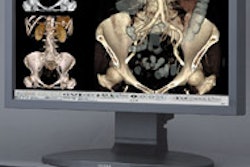A cardiology PACS administrator needs to have patience, be capable of open communication, and have a wide-ranging knowledge bank to draw upon, according to Jonathan Pavlicek, a regional cardiology systems project manager at Banner Health Systems in Phoenix.
Pavlicek spoke during a talk at PACS 2005: The Expanding Integrated Digital Healthcare Enterprise, a March conference in San Antonio sponsored by the University of Rochester School of Medicine & Dentistry in Rochester, NY.
Banner Health is a seven-facility health system handling overall volume of approximately 20,000 cases per year in its 19 cath lab rooms. Echocardiography volume reaches an estimated 25,000 cases per year.
Characteristics for success
A cardiology administrator must be patient with the issues that arise, Pavlicek said.
"The stress level in the cath lab, especially with the cardiologists, can go up very high," he said.
The administrator must listen to the physicians, and learn how they want the images presented and where they want them; staff and managers also need to be listened to, he said.
In addition, an administrator should practice open communication, Pavlicek said.
"Be thick-skinned," he said. "The other thing is, be strong in your conviction of what can and cannot work. With my networking and IT background, I can give them a really quick scenario of 'Well, that's not going to work, and here are the reasons why.'"
Be flexible enough to look at other options, though, Pavlicek said.
"Be teachable and be willing to teach," he said. "As I've gone out and worked with physicians and the staff as I've addressed these issues, I've taken the time to teach them. Because the more I teach them up front, the less likely they'll be calling me down the road."
An administrator should also have an extensive knowledge bank, including a strong IT background, and an understanding of cardiology and business workflow. The administrator should also have the vision to perceive what can be done to improve things, Pavlicek said.
Daily interactions
Physicians aren't interested in excuses; they want everything now. As a result it's important to emphasize training, including learning how to perform searches of the image system, Pavlicek said.
Other aspects to be aware of include network connections, such as from the imaging equipment to the cardiology PACS network and review stations, as well as printing options and server uptime, he said. Access to patient information is provided via hemodynamic systems, transcription systems, and image systems.
It's a good idea to try and train a "super user" in the lab, someone who can handle basic issues and validate data and images, Pavlicek said. This user can help physicians retrieve cases and resolve searching errors, and serve as the point of contact between the technology management department and hospital staff, he said.
"If they can't figure it out, they know to call me," Pavlicek said. "And if I'm not available, they know to call the technology management department."
The technology management group assists in any desktop, application, hardware, and network issues.
"Bringing in IT is huge," he said. "I've had a lot of success in the last year ... and a half of bringing in the IT department to support this modality."
Banner uses its vendors heavily for support. Basic contracts spell out what's supported in-house, and what issues the vendors need to support, Pavlicek said. Each facility decides what level of support is needed.
It's not radiology
It is important to understand that cardiology workflow is different than radiology, Pavlicek said. The specialty doesn't use worklists, and although this is about to change, there are no accession numbers for images and orders. Scheduling of cases is performed in an independent system, and emergency cases are sometimes squeezed in.
Cardiology also deals with moving images and produces much larger image files. Also, what is performed is not always what is scheduled. Procedures are changed sometimes as the case is done, or if the physician wants to do something different, he said.
A cardiology information system offers a centralized system for scheduling, as well as case reports.
"Case reports are very, very important in a cardiovascular environment," Pavlicek said. "You have an event log that show minute by minute what happened in that case."
The cardiology information system also accommodates physician reports. Utilizing templates and employing data transferred from the hemodynamic system, physicians fill in the blanks and electronically sign the report.
Inventory control, statistical reports, and Web options are also available in the cardiology information system.
By Erik L. Ridley
AuntMinnie.com staff writer
April 25, 2005
Related Reading
Diagnostic imaging and clinical information systems: An integration primer, April 14, 2005
Planning mitigates PACS data migration, March 21, 2005
PACS improves care, builds interhospital relationships, March 14, 2005
PACS administrator role requires planning, vigilance, March 11, 2005
Web-based workflow and reporting systems keep imaging on track, March 10, 2005
Copyright © 2005 AuntMinnie.com



















